#Evgeny Romanov
Text







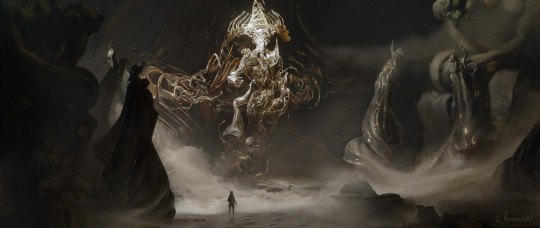

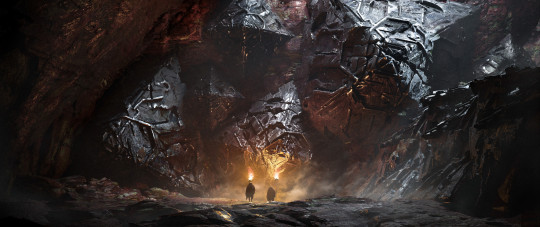

The superb futuristic sci-fi-themed creations of Evgeny Romanov - https://www.this-is-cool.co.uk/the-superb-futuristic-sci-fi-creations-of-evgeny-romanov/
#Evgeny Romanov#sci-fi art#3d art#3d artist#this-is-cool#scififantasyhorror#digital art#concept art#science fiction art#concept artist#sci-fi artist#digital artist
241 notes
·
View notes
Text
105 years ago, on the night of 16/17 July 1918, the Romanov family and their attendants were killed in Ekaterinburg.
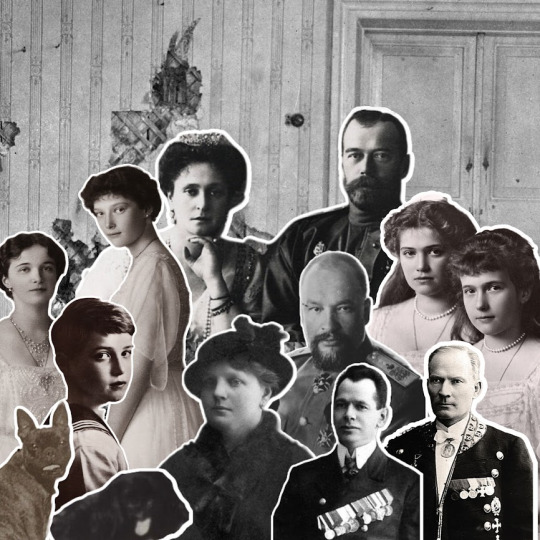
Pierre Gilliard, the beloved tutor of the imperial children, was one of the first people to enter the Ipatiev House after the murders. As part of the Sokolov Investigation into the crime and the subsequent media frenzy, he gave these statements:
“…the stoves; they were all full of various burned articles. I recognised a considerable number of burned things such as tooth- and hair-brushes, pins and a number of small things bearing the initials: "A. F." [Alexandra Feodorovna.]”
"I then went to the lower storey, the greater part of which was a basement. I entered with intense emotion the room in which, perhaps, they had died. Its aspect was most sinister. Daylight came in through a window with iron bars across it. The walls and the floor bore marks of bullets and bayonet thrusts. It was quite obvious that a dreadful crime had been committed there, and that several people had been killed.
In my despair believed that the Emperor had perished, and, that being the case, I could not believe the Empress had survived him… Yes, it was quite possible that they had both been killed. And the children? Had they also been massacred? I could not believe it. The idea was too horrible. And yet everything seemed to prove that the victims had been numerous."
Nicholas II Alexandrovich Romanov (1868-1918)
Alexandra Feodorovna Romanova (1872-1918)
Olga Nikolaevna Romanova (1895-1918)
Tatiana Nikolaevna Romanova (1897-1918)
Maria Nikolaevna Romanova (1899-1918)
Anastasia Nikolaevna Romanova (1901-1918)
Alexei Nikolaevich Romanov (1904-1918)
Dr. Evgeny Sergeievich Botkin (1865-1918)
Anna Stepanova Demidova (1878-1918)
Ivan Mikhailovich Kharitonov (1872-1918)
Alexei Aloise Egorovich Trupp (1856-1918)
Ortipo (1914-1918)
Jimmy (1915-1918)
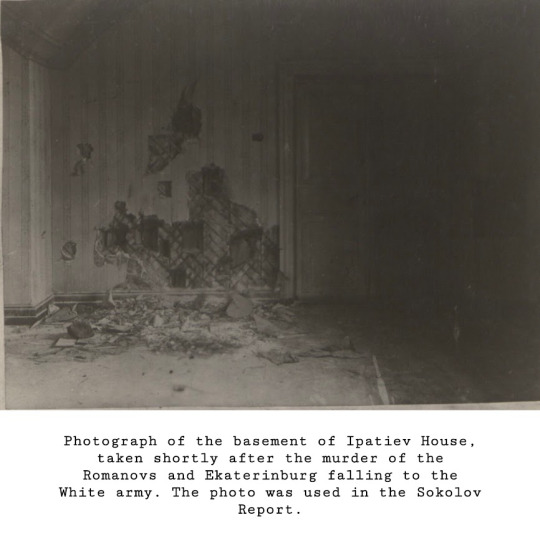









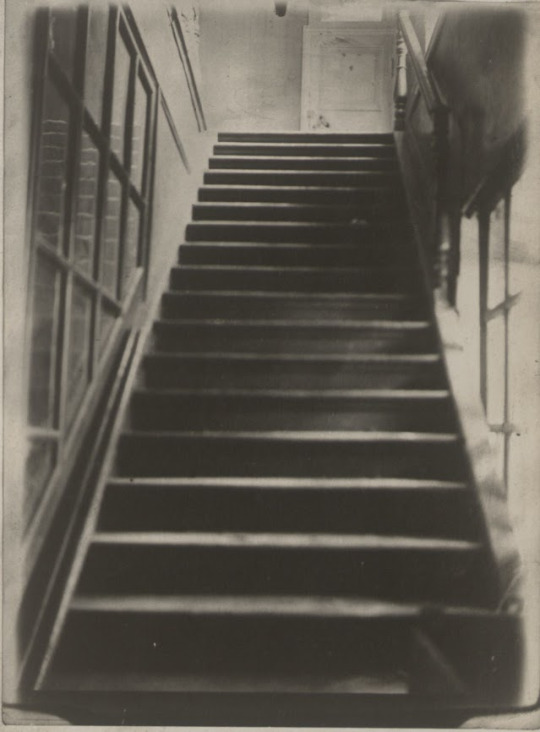
SOURCES:
The Last Days of the Romanovs, Telberg, Wilton, Sokolov. The Crime of Ekaterinburg, Illustrated London News
#olga nikolaevna#tatiana nikolaevna#maria nikolaevna#anastasia nikolaevna#alexei nikolaevich#Tsar Nicholas II#Alexandra Feodorovna#Alexei Trupp#Aloise Trupp#Anna Demidova#Dr. Botkin#Evgeny Botkin#Ivan Kharitonov#Jimmy#Ortipo#OTMA#NAOTMAA#Romanov family#Russian history#imperial russia#Ipatiev House#Ekaterinburg#Nikolai Sokolov#Sokolov Report#sources#Pierre Gilliard#my own
101 notes
·
View notes
Text
The saddest day in my life
July 17th
On this day, 105 years ago, Wednesday July 17th 1918, Tsar Nicholas II of Russia (50), his wife Tsarina Alexandra Feodorovna (46) and their children, Grand Duchesses Olga (22), Tatiana (21), Maria (19), Anastasia (17), Tsarevich Alexei (13), their four loyal friends, Alexei Trupp (62), Ivan Kharitonov (46), Anna Demidova (40), Evgenie Botkin (53) and beloved pets Ortipo (4) and Jimmy (3) were brutally murdered in shooting by Bolsheviks in Ipatiev House, Ekaterinburg.
Orthodox chuch has canonised them as Saints after the fall of communism.
We can only believe that they are praying for us. 😭💔
#saddest#17th July#17th July 1918#long live the monarchy#god save the tsar#tsar nicholas ii#tsarina alexandra#olga nikolaevna#tatiana nikolaevna#maria nikolaevna#anastasia nikolaevna#alexei nikolaevich#alexei trupp#anna demidova#ivan kharitonov#evgenie botkin#ipatiev house#house of the special purpose#house of romanov#romanov#romanovs#ortipo#jimmy
32 notes
·
View notes
Text

Today, July 17th 2023, marks the 105th anniversary of the execution of the last Imperial Family of Russia…
Tsar Nicholas II, Tsarina Alexandra Feodorovna, Olga Nikolaevna, Tatiana Nikolaevna, Maria Nikolaevna, Anastasia Nikolaevna, Alexei Nikolaevich and the family’s 4 faithful servants, Doctor Evgeny Boykin, Anna Demidova, Ivan Kharitonov, and Alexei Trupp were brutally executed in the basement of the Ipatiev House or “The House of Special Purpose” as it was know to Yakov Yurovsky and other Bolsheviks who killed the family. This photo is what was left of their execution, taken by the White Czechs.
#tsar nicholas ii#alexandra feodorovna#olga nikolaevna#tatiana nikolaevna#maria nikolaevna#anastasia nikolaevna#otma#alexei nikolaevich#romanov#romanovs#otmaa#naotmaa#ipatiev house#yekaterinburg#Evgeny botkin#doctor botkin#Anna demidova#Ivan kharitonov#Alexei trupp#the house of special purpose#Yakov yurovsky#captivity#july 17#July 17th 1918
24 notes
·
View notes
Photo
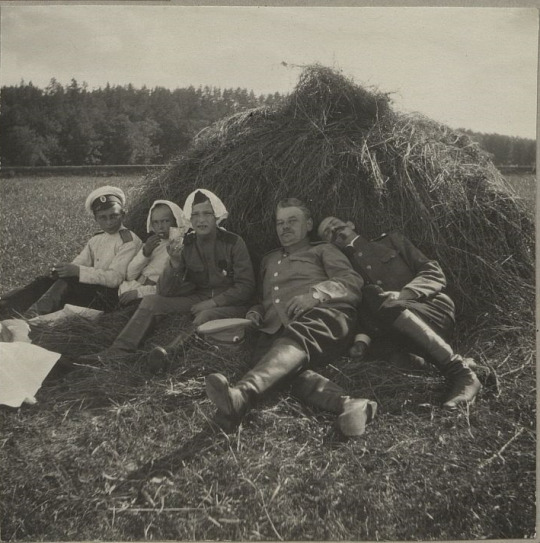

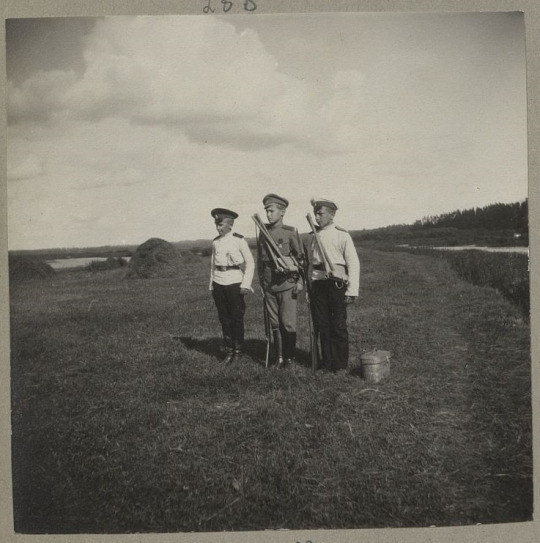

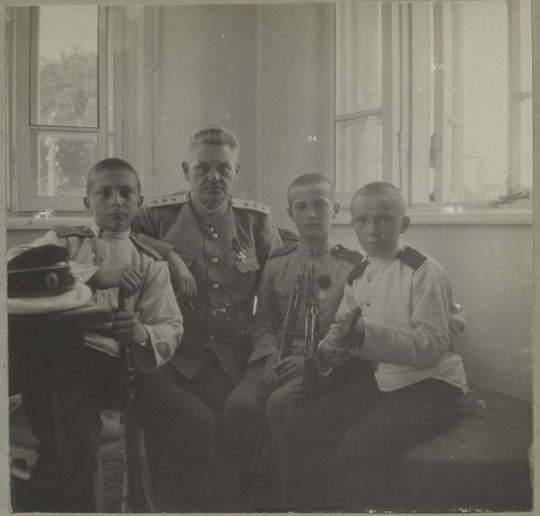
Cadets Evgeni Makarov and Vasili Agaev - Part VII
(Continuation of the 1916-1917 Album of Grand Duchess Anastasia Nikolaevna)
These five photographs come from the Album of Grand Duchess Anastasia Nikolaevna (Circa. 1916-1917). If one peruses through the albums (generously scanned by Ilya Grigoriev), you can see that copies of the same photograph were pasted into various albums belonging to the Grand Duchesses, as well as, Their Majesties.
Cadets Makarov and Agaev (affectionately referred to as “Zhenya” and “Vasya” by the Tsesarevich, and his family), came to Stavka at Mogilev (General Headquarters) in mid-late Summer of 1916. In the Tsesarevich’s diary entries, his times spent at “HQ” were some of the happiest in his life. He felt the most freedom there as opposed to Tsarskoe Selo where he was surrounded always by “fussy women.”
This is the end of photographs of the two boys, in the way of the Imperial Family’s private photograph albums. In other albums and funds (archives) are other photographs. I plan on sharing these too (though they probably have already been posted on here xD) - but I need some shut-eye!
Good night everyone (actually, good morning!), hope you enjoyed this series of posts. ^_^
________________________________________________________________
Photographs:
1. Tsesarevich Alexei Nikolaevich with Cadets Evgeni Makarov (left) and Vasili Agaev (far left), as well as, Petr Petrov (right) and Pierre Gilliard (far right).
2. Tsar Nicholas II (far right) with Cadets Evgeni Makarov (standing, left) and Vasili Agaev (sitting, infront of Cadet Evgeni Makarov), as well as, Tsesarevich Alexei Nikolaevich (center, next to Cadet Vasili Agaev).
3. Tsesarevich Alexei Nikolaevich with Cadets Evgeni Makarov (left) and Vasili Agaev (right).
4. Cadets Evgeni Makarov (right) and Vasili Agaev (left), as well as, Petr Petrov (next to Cadet Vasili Agaev) and Boatswain Andrei Derevenko (next to Cadet Evgeni Makarov).
5. Tsesarevich Alexei Nikolaevich with Cadets Vasili Agaev (left) and Evgeni Makarov (right), as well as, Petr Petrov (center, between Cadet Vasili Agaev and Tsesarevich Alexei Nikolaevich).
________________________________________________________________
Sources:
Альбом Анастасии Николаевны, 1916-1917 гг.
Link of courtesy:
https://www.flickr.com/photos/149552988@N02/albums/72157703990478911
#evgeni makarov#vasili agaev#simbirsk cadet corps#orlovsky-bakhtin cadet corps#tsesarevich alexei#alexei nikolaevich#imperial russia#photographs#1916#1917#russian archival material#ilya grigoriev#russian state archives#great wave#first world war#tribute post#romanov
60 notes
·
View notes
Note
Did members of the Romanovs like literature?
Hi! Yes, many of them did, although I’d have to assume that some were more into literature than others. Grand Duchess Olga Nikolaevna (daughter of Nicholas I) loved Pushkin, and her sister Grand Duchess Alexandra Nikolaevna enjoyed Plutarch and Goethe. Emperor Nicholas II frequently mentions literature in his diaries—everything from Pushkin to the Bible. Supposedly, the names of his two eldest daughters were inspired by the characters of Tatiana and Olga in Pushkin’s Evgeny Onegin! Of his children, Grand Duchess Olga Nikolaevna was said to be an avid reader, and I forget where I read it, but somewhat ironically, she liked Victor Hugo’s Les Miserables!
9 notes
·
View notes
Text











MISSION 2: Workers Of The Worlds
Operational security must be maintained at the lowest level to protect intelligence operations at the highest level. As subclearance assets, your affiliation to the UIB, the Ypsilon Greenhouse classified information container, or your specific handlers is not to be disclosed, referenced, recorded, implied, or alluded under any circumstances outside the following:
Your handler contacts you directly via confirmed paracausal or high-cryptographic means.
You are contacted by another asset within Ypsilon Greenhouse, that asset uses your specific identification phrase, and that asset uses their specific identification phrase.
You are reporting through approved and specific asynchronous channels to your handler within Ypsilon Greenhouse or through SPYGLASS asynchronous paracausal channels.
Remember:
Your handlers will never ask you to disclose information outside of a secure contact method.
Your handlers will never ask for your identity, or disclose theirs.
Your handlers will never contact you outside of your established contact channel
You will never receive a new handler without direct confirmation from your previous handler.
"The strike conditions on Banks are volatile and dynamic. Your mission parameters are narrowly defined: locate the asset codenamed White Dwarf, secure their safety, and extract them. Do not assist the strikers or the strikebreakers beyond absolutely necessary for the mission. You are not going there to resolve a planetwide labor dispute, you are going there for one person and one person only."
Factory art from this excellent art set by Evgeny Romanov; mech sprites from the indispensable generator on Retrograde Minis
6 notes
·
View notes
Text
The Last Tsar: How Russia Commemorates the Brutal Communist Murder of Emperor Nikolai II's Family
Over 103 years ago, Bolsheviks shattered a royal line that had lasted for over three centuries
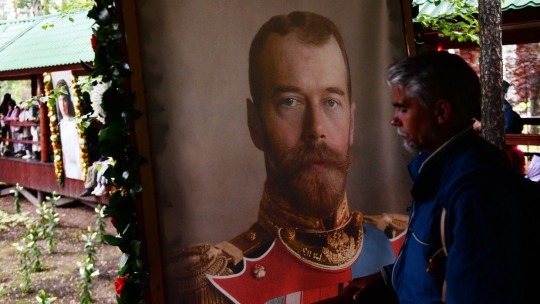
Portrait of Nicholas II at the monastery in the tract of Ganina Yama during the festival 'Royal Days', dedicated to the memory of the Romanov family, in Yekaterinburg. © Sputnik/Pavel Lisitsyn
On the night of July 16-17, 1918, the Bolsheviks shot the family of the last Russian tsar, Nicholas II. Eleven people were killed in total: The emperor, the empress, five of their children, and four royal servants. The remains were secretly buried in an abandoned mine, the location of which was hidden until the collapse of the Soviet Union.
The family of Nicholas II was subsequently canonized by the Russian Orthodox Church, and for the last 30 years, in mid-July, Christians from all over the world participate in a church procession from the murder site in Ekaterinburg to a monastery in Ganina Yama. An RT correspondent learned the story of this extrajudicial massacre and talked to pilgrims about their attitude to the Holy Royal Passion-Bearers.
In March of 1917, before the October Revolution, Russia’s provisional government decided to arrest the royal family. At first, the Romanov's lived at Tsarskoye Selo, but in August, they were forced to go to Tobolsk. In the spring of 1918, the group was moved to Ekaterinburg, where they stayed in the house of an engineer named Nikolay Ipatiev, which had been requisitioned by the Bolsheviks, and sometimes received food from the nuns of the Novo-Tikhvin convent.
On the night of July 16-17, 1918, Nicholas II, Empress Alexandra Feodorovna, Grand Duchesses Anastasia, Tatiana, Olga, and Maria, Tsarevich Alexei, imperial doctor Evgeny Botkin, imperial cook Ivan Kharitonov, the empress’ housemaid Anna Demidova, and the tsar’s valet Aloysius Troup, were all shot by Bolsheviks under the command of Yakov Yurovsky.
Shortly afterwards, the murder of the royal family was investigated by Nikolay Alekseevich Sokolov, a judicial investigator for particularly important cases with the Omsk District Court. The civil war between the Communists and their opponents was still raging in Russia in 1918. On July 25, anti-Bolshevik forces from the Siberian army occupied Ekaterinburg.
At the beginning of February 1919, Sokolov was summoned by the Supreme Governor, Admiral Alexander Kolchak, and instructed to launch an investigation. After the execution of Kolchak by the Communists in the winter of 1920, the investigator left the country and continued to take testimony from witnesses in Western Europe. In Paris, he interviewed Prince Lvov, the former chairman of the provisional government’s Council of Ministers, as well as its former minister of justice, Kerensky, and minister of foreign affairs, Milyukov.
Kerensky cited two main reasons for the arrest of the tsar and his family. The first was the “agitated mood” of workers and soldiers who wanted to deal with the sovereign. The second was “high-ranking officers” who thought the emperor and empress intended to conclude a “separate peace” with Germany.

© Mark Bratchikov-Pogrebisskiy
Sokolov’s book entitled ‘The Murder of the Royal Family’, which contains materials from the investigation, was published in Berlin in 1925. He had been one step away from solving the mystery of whereabouts of the tsar’s remains but did not have time to discover them before the Bolsheviks took the area.
The key document containing details about the regicide is a note from 1920 written by Yurovsky, who had overseen the killing. According to his memoirs, on a night in July 1918, the royal family and their servants were told: “‘Due to unrest in the city, it is necessary to transfer the Romanov family from the upper floor to the lower one’… When the team entered, the commandant told the Romanovs that, since their relatives in Europe [probably meaning German troops under the leadership of the empress’ cousin, Emperor Wilhelm II – ed. note] were continuing their offensive against Soviet Russia… the [Ural] District’s executive committee had decided to shoot them. Nikolai turned his back to the team and faced his family. Then, as if coming to his senses, he turned to the commandant and asked: ‘What? What?’ The commandant hastily repeated his words and ordered the team to prepare. The team was told in advance who was to shoot at whom and ordered to aim directly at the heart in order to avoid a large amount of blood and end the affair as quickly as possible. Nikolai said nothing more and turned back to his family. The others uttered several incoherent exclamations for several seconds. Then the shooting began and lasted two to three minutes. Nikolai was killed on the spot by the commandant himself. Then, Alexandra Feodorovna and the Romanovs’ servants died immediately... Alexey, three of his sisters, the lady-in-waiting [Anna Demidova], and Botkin were still alive. This surprised the commandant, because they were aiming directly at the heart. They had to be shot again. It was also surprising that the bullets ricocheted off something, like hail, and bounced around the room. When they tried to stab one of the girls with a bayonet, the bayonet could not pierce the bodice. Thanks to all this, the whole procedure, counting the ‘check’, took 20 minutes.”
According to the note, the bodies were supposed to be buried in an abandoned mine nearby. However, shortly after the murder, it turned out that no one knew where it was, and nothing had been prepared to carry out the burial. In addition, the Bolsheviks were prevented from ending the affair as soon they wished, as the perpetrators of the murder made sporadic attempts to steal valuables from their victims. A car left Ekaterinburg with the bodies and stopped near the village of Koptyaki, where another abandoned mine was found in a nearby forest. The bodies were stripped and lowered down. The Bolsheviks tried to avoid inconvenient witnesses. They even announced in the village of Koptyaki that Czechs, who were armed opponents of the Soviet government, were hiding in the forest and that it would be searched. No one was allowed to leave the village. “The idea arose to bury some of the corpses right there in the mine,” Yurovsky writes. “They began to dig a hole and had almost dug it out when a peasant friend of Ermakov [who aided in hiding the bodies] drove up and it turned out that he could see the pit.”
In 2000, the monastery of the Holy Royal Passion-Bearers was established in the Ganina Yama tract. Some Orthodox consider this to be the final burial place of the royal remains.

© Mark Bratchikov-Pogrebisskiy
Later, at a meeting of old Bolsheviks in 1934, Yurovsky described the vicissitudes of the burial in more detail. On the morning of July 17, water covered the bodies that had been put in the mine. They wanted to blow up the mine with bombs, but nothing came of it. They decided to “transport the corpses to another place.” Yurovsky instructed his subordinates to remove the bodies. “I had a plan, in case any problems arose, to bury them in groups, in different places along the roadway.”
Then they began to dig a new hole, but at some point, the already mentioned acquaintance of Ermakov saw it and the plan failed.
“After waiting for evening, we loaded the cart… It was already approaching midnight when I decided it was necessary to bury them somewhere nearby, since no one could see this place… I sent them to get railroad ties to cover the place where the corpses would be buried... About two months ago, I was leafing through a book by Sokolov, the investigator on extremely important cases, and I saw a picture of these railway ties. It says that they had been laid there to help trucks pass. So, after digging up the whole area, they didn’t think to look under the railway ties.”
While Sokolov was able to find traces of members of the imperial family near the Ganina Yama, he never found the bodies themselves.
“A bonfire was immediately lit, and while the grave was being prepared, we burned two corpses: those of Alexei and Demidova [in fact, Grand Duchess Maria – ed. note], who we burned instead of Alexandra Feodorovna by mistake. A pit was dug near the fire. We put the bones in and covered it. Another large fire was lit on top, and all traces were hidden by ashes. Meanwhile, a mass grave was dug for the others… Before putting the rest of the corpses into the pit, we poured sulfuric acid over them. Then we lowered them into the pit, poured more sulfuric acid on them, filled in the pit, and covered it with railroad ties. The empty truck drove over them a few times to tamp them down and that was it. At 5-6am, we gathered everyone and explained the significance of what we’d done, warning that everyone should forget about what they’d seen and never talk about it with anyone. Then we went to the city.”
In 2015, an investigator in the Prosecutor General’s Office of the Russian Federation named Vladimir Solovyov said that Pyotr Voykov had written out a purchase order for sulfuric acid. A metro station in the north of Moscow still bears the name ‘Voykovskaya’.
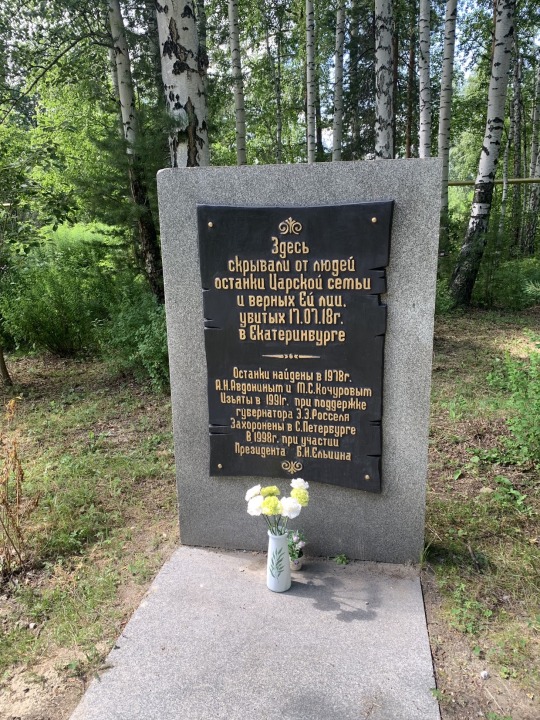
© Mark Bratchikov-Pogrebisskiy
The imperial family’s final burial place under a platform of railway ties was not a secret for all Soviet citizens – apparently, high-ranking party functionaries knew about it. Literary critics believe that this place was even shown to the poet Vladimir Mayakovsky in 1928. The result of the visit was his poem ‘The Emperor’.
The first to discover the royal remains in Soviet times was geologist Alexander Avdonin, a graduate of the Ural Mining Institute. In the 1960s, Avdonin met Gennady Lisin from the Ural Worker publishing house. Lisin claimed that he’d been a member of the Boy Scouts and had helped White investigators search for the burial site in his youth. It was he who showed Avdonin Ganina Yama.

© Mark Bratchikov-Pogrebisskiy
In 1976, Geli Ryabov, a screenwriter from Moscow and an honored employee of the Soviet Ministry of Internal Affairs, went to Avdonin. A few years later, Avdonin thoroughly examined the Old Koptyakov Road, along which the Bolsheviks had once transported the bodies of the Romanovs. In the town of Porosenkov Log near Ekaterinburg, he found the same railway ties. Under them, the geologist managed to find skulls and bones. Ryabov took two skulls to Moscow in the hope of conducting an examination. However, no one agreed to help him before the collapse of the USSR. Later, Avdonin and Ryabov decided to rebury the wooden box containing the remains near the place it was discovered – until better times.
In 1989, Ryabov told the Moscow News that he had found the imperial remains, and interest in the tsarist mystery grew rapidly among amateur geologists. Avdonin began to worry about the fate of the remains and wrote a letter to the chairman of the Supreme Soviet of the RSFSR, Boris Yeltsin, who instructed the governor of Sverdlovsk Region, Eduard Rossel, to deal with the issue.

© Mark Bratchikov-Pogrebisskiy
In 1993, Rossel was briefly the head of the Ural Republic, a de facto entity in the Russian Federation that was not provided for by the Constitution. The governor believed that the Urals should become more independent in economic and legislative terms. In November, the initiative was finally curtailed, and Rossel was dismissed. Ural historians and journalists suspect that the governor may have been using the royal remains as a bargaining chip with the federal authorities up until that moment.
In 1998, after numerous examinations, the remains were buried in the Peter and Paul Cathedral in St. Petersburg in the presence of Yeltsin. At that time, the Russian Orthodox Church did not recognize the authenticity of the remains, and Patriarch Alexy II did not attend the funeral.

© Mark Bratchikov-Pogrebisskiy
Among the discovered remains, two of the dead were missing. In 2007, a search team found the remains of Grand Duchess Maria and Tsarevich Alexei 75 meters from the main burial site.
In March 2022, ex-Metropolitan Hilarion of Volokolamsk, chairman of the Moscow Patriarchate’s Department for External Church Relations, stated that “We now have clear and sufficient evidence that the ‘Ekaterinburg remains’ are the genuine remains of members of the royal family… It seems to me that the arguments supporting the authenticity of the ‘Ekaterinburg remains’ significantly outwfeigh any arguments that could refute it.” The church could have officially recognized the authenticity of the remains at the Bishops’ Council in May, but this had to be postponed.

© Mark Bratchikov-Pogrebisskiy
Sixty years after the October Revolution, Ipatiev’s house was demolished. Yeltsin was then the first secretary of the Sverdlovsk Regional Committee of the CPSU. In 2003, a Church-on-Blood was erected on this site, and in 1992, the tradition of holding a penitential procession was born. Its current route was established in 1994.
The Romanov Memorial is now located in the Porosenkov Log tract. Ilya Korovin, the director of the memorial, who is a supporter of Avdonin’s theory concerning the preserved remains, told RT that the procession route does not include this cultural heritage site.

© Mark Bratchikov-Pogrebisskiy
In 2018, Patriarch Kirill participated in the procession. After four years, believers again walk around 20 kilometers from the Church-on-Blood to the monastery of the Holy Royal Passion-Bearers in the Ganina Yama tract. This year, there were 50,000 pilgrims, according to the St. Catherine’s Foundation.
In conversations with RT during the procession, believers shared their views on whether the Church should officially recognize the royal remains. Some believe this would be the right thing to do, putting an end to the ‘biggest crime’ in Russian history. Others, on the contrary, do not believe the remains found by Avdonin are authentic, holding that they were probably destroyed in Ganina Yama.
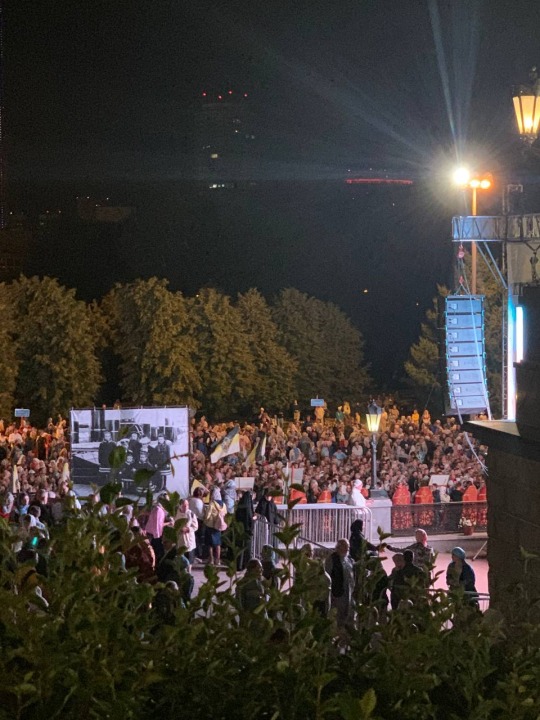
© Mark Bratchikov-Pogrebisskiy
The procession begins at 2:30am Ural time. It is headed by church leaders, followed by a long column of Orthodox Christians, who hail not only from Russia, but also from Western Europe, Latin America, and Asia. In less than four hours, the first pilgrims appear at the final point of the route – the monastery at Ganina Yama. Orthodox Christians in comfortable sneakers carrying bottles of water cheerfully sing “Lord, Jesus Christ, have mercy on us!” The former mine is now enclosed by a gallery filled with portraits of the royal passion-bearers and their faithful servants.
RT spoke with people born in the Urals who say that they participated in the procession as children, and now help their elderly parents walk along this long route.
— By Mark Bratchikov-Pogrebisskiy, a Moscow-based Journalist | RT | August 14, 2022
3 notes
·
View notes
Text
If you ever wondered what has been going on inside my head for the last year, then well, I guess you should know that it's "Я остаюсь" cover made by Igor 'Garik' Sukachev and... a LOT of rock musicians (yes, I'm going to list all of them, you will at least know the rock legends of my country), here they are:
- Sergey Shnurov ('Ленинград')
- Vladimir Shahrin ('Чайф')
- Alexander F. Sklyar ('Ва-Банкъ')
- Oleg Garkusha ('АукцЫон')
- Sergey Galanin ('Серьга')
- Sergey 'Chizh' Chigrakov ('Чиж&Co')
- Alexey Romanov ('Воскресение', 'Машина времени')
- Nikolai Devlet-Kildeev ('Моральный кодекс')
- Evgeny Margulis ('Воскресение', 'Машина времени')
- Andrey Blednyi and Anton Zavyalov ('25/17')
- Andrey 'Knyaz' Knyazev ('Князь', 'Король и шут')
- Nastya Poleva ('Настя')
- Svetlana Surganova ('Сурганова и Оркестр', 'Ночные Снайперы')
- Aya ('Город 312')
- Anton 'Puh' Pavlov ('F.P.G.')
- Masha Makarova ('Маша и медведи')
- Vladimir and Sergey Kristovsky ('Uma2rmaH')
- Tatyana Litvinenko ('Квартал')
- Maxim Kucherenko ('Ундервуд')
#and yes considering the time of release it was meant as a song about not running away in the face of all the fairly recent events#because unlike certain members of the liberal elite those people did not flee the country and basically conveyed what I've been feeling#actually. it's the first time I'm gonna make a political statement: fuck the liberal elite. y'all betrayed even your own supporters.#yes. this statement may be controversial and frowned upon but I just... lost respect for a lot of people and realized certain things.#I am so much different than I was one year ago and I feel like it's for the best.#they never really cared about us. they never really cared about what's going to happen to my country while saying how much they love it.#they never really cared about the improvement of our country cultural scene.#they only knew about how to shit on anything new made by my generation (that respected them btw) and say how much better it is in the west#it was basically the same old song all over again. and when I realized how much love we can give to our people's art projects...#I got angry
1 note
·
View note
Text
Russian prisoners who have been recruited by Russia’s Defense Ministry since February 2023 are now signing contracts to serve the Russian military for 18 months, reports Olga Romanova, head of the NGO Russia Behind Bars, on Telegram. Romanova writes that she learned of the new practice in the Sverdlovsk and Yaroslavl regions.
Until recently, Romanova notes, prisoners were signing up for six months of service. In March 2023, Wagner Group founder Evgeny Prigozhin announced that more than 5,000 former prisoners had been freed, since summer 2022, after fulfilling their contracts with his private military company.
Romanov believes that increased length of contracts may connected to the Russian authorities’ admission that the war will continue into 2024.
“They’re counting on fighting next year also,” she said.
Wagner Group pioneered the recruitment of Russian prisoners to fight in Ukraine, during the summer of 2022. By that winter, according to Russia Behind Bars, more than 50,000 prisoners had been recruited. Russia’s Defense Ministry took over prisoner recruitment in early 2023.
0 notes
Note
hi! So I was just rewatching the movie Romanovs an Imperial Family and I noticed that at Tobolsk they (the guards) took pictures of the family (front and side profiles) and I was also just watching Nicholas and Alexandra (1971) and I noticed that they also took pictures at Tobolsk. Did this happen in real life or is it just a myth? (If it’s a myth you can put it on the list for your series :)
Thank you!
Hi! Thank you so much for your question lovely! It made me dig a lot deeper into whether this was actually true and I am pleased to say that it isn't a myth, but something that actually happened. Here are some details!
Pierre Gilliard's diary mentions the family having to have identification photos taken. On 17 September 1917 he wrote that "ID cards with numbers, equipped with photographs" were taken of the family. According to Paul Gilbert, who runs the Nicholas II website and has a great article about this, Alix also wrote about this in her diary.
Pierre Gilliard also wrote about this in his memoir Thirteen Years at the Russian Court, Page 286:
In September Commissary Pankratof arrived at Tobolsk, having been sent by Kerensky. He was accompanied by his deputy, Nikolsky—like himself, an old political exile. Pankratof was quite a well-informed man, of gentle character, the typical enlightened fanatic. He made a good impression on the Czar and subsequently became attached to the children. But Nikolsky was a low type, whose conduct was most brutal. Narrow and stubborn, he applied his whole mind to the daily invention of fresh annoyances. Immediately after his arrival he demanded of Colonel Kobylinsky that we should be forced to have our photographs taken. When the latter objected that this was superfluous, since all the soldiers knew us—they were the same as had guarded us at Tsarskoie-Selo—he replied: " It was forced on us in the old days, now it's their turn." It had to be done, and henceforward we had to carry our identity cards with a photograph and identity number."
It's worth mentioning that all the staff that worked at the palace before the Revolution did indeed have to carry ID passes with photographs.
We have a brilliant example of what one of these passes in Tobolsk might have looked like in the form of passes for Botkin and Demidova, which are now Museum of the Family of Emperor Nicholas II in Tobolsk. I sadly couldn't find Demidova's, so have just attached Botkin's.

Captioned: 'Identity card (pass) E. S. Botkin for the right to enter the house number 1 (“Freedom House”) dated November 6, 1917.'
Which brings me on to a lady named Maria Mikhailovna Ussakovskaya. For clarification, I don't know if she was the person who took the photos for definite, but she was a prominent photographer in the area and could have been hired to take the photos. She did 100% have some connection to the Romanov family, as I'll explain later.
Maria was a photographer in Tobolsk, in fact she was the first woman photographer from the region that operated professionally, and she had her own salon. She even photographed Rasputin - you can see her surname embossed on the cabinet card here, reading Уссаковская

She photographed the family's entourage, too, as the staff were able to move freely about Tobolsk. Shown here are (left-right): Catherine 'Trina' Schneider, Count Ilya Tatishchev, Pierre Gilliard, Countess Anastasia 'Nastenka' Hendrikova, and Prince Vasily Dolgorukov. Note Maria's surname embossed again onto the card, showing it was taken and produced at her salon.

Invoices for the family show that the Romanovs had several payments sent to Ussakovskaya for postcards and "correcting negatives", so we know that there definitely was a relationship between the two parties. She took photos of the exterior of the house in Tobolsk, and postcards were sent by the Grand Duchesses showing the house, so they might have used her photos.

Letter sent from Maria to Nikolai Demenkov, her 'crush'
Which then begs the question of what happened to these ID photos...
Apparently, Maria Ussakovskaya's daughter Nina owned some photographic plates of the Romanov family. It's not explained whether these were casual photos taken of the family, or ID photos, but according to Paul Gilbert "in 1938... fearing arrest, [Nina] destroyed all the photographic plates".
Owning any Romanov or Tsarist related items, including photographs and postcards, was an arrestable offence. The rise of the gulags in the 1930s with the Stalinist regime probably prompted Nina to destroy what she owned.
Personally, I don't have much hope that any of the photos of the family will ever turn up. But there is always a small chance, I suppose :)
To conclude: yes, this happened, photos were definitely taken of the family for identification passes. Pierre Gilliard is a trustworthy source and the fact that it was written in his diary and also Alix's diary is pretty much concrete evidence. The existence of Maria Ussakovskaya and her association with the family also points towards this, alongside the bills and invoices sent to the family at Freedom House.
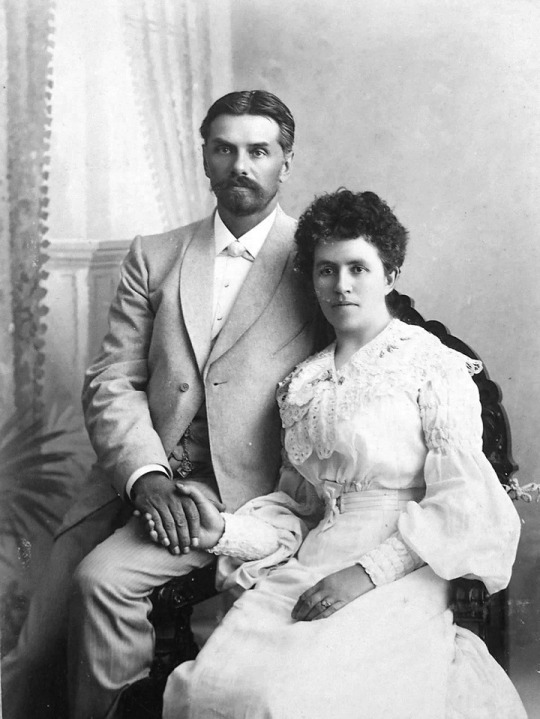
Maria with her husband, Ivan.
SOURCES:
The woman who photographed the Imperial Family in Tobolsk by Paul Gilbert
Thirteen Years at the Russian Court by Pierre Gilliard
#q#ask#answered#OTMA#Romanovs#Romanov family#Tobolsk#Freedom House#Exile#Captivity#Eugene Botkin#Evgeny Botkin#Anna Demidova#Pierre Gilliard#Alexandra Feodorovna#Maria Nikolaevna#sources#Thirteen Years at the Russian Court#my own
18 notes
·
View notes
Text
~17th July, 1918 edit~
my edit made by using capcut
#tsar nicholas ii#alexandra feodorovna#olga nikolaevna#tatiana nikolaevna#maria nikolaevna#anastasia nikolaevna#romanov edit#anna demidova#ivan kharitonov#alexei trupp#evgenie botkin#alexei nikolaevich#ipatiev house#sad edit#my edit#17th July 1918#17th of july#im crying here#😭🇷🇺💔❤️🩹
6 notes
·
View notes
Text

Grand Duchess Anastasia Nikolaevna with her brother Tsarevich Alexei Nikolaevich and his two friends Cadets Vasily Agaev (middle) and Evgeny Makarov (right), Mogilev 1916
#anastasia nikolaevna#alexei nikolaevich#cadet vasily agaev#cadet evgeny makarov#vasily agaev#evgeny makarov#mogilev#1916#stavka#i love how makarov is holding a balalaika 🤍🫶🥹#romanov#romanovs#russian imperial family
23 notes
·
View notes
Photo



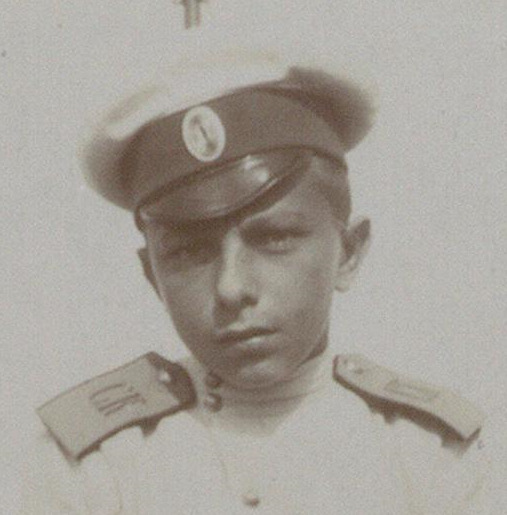

Cadets Evgeni Makarov and Vasili Agaev - Playmates and close friends of Tsesarevich Alexei Nikolaevich of Russia
In the 1916 diary of Tsesarevich Alexei Nikolaevich, which was gifted to him by his mother, the Empress, there is mention of two boys who frequented Mogilev (Stavka, General Headquarters) with the Tsesarevich. Alexei wrote of them quite often, mentioning playing with them, and even what cadet schools they were both from. He mentioned how they would write letters to him, and also during December of 1916 there was an album sent from Cadet Agaev to Tsesarevich Alexei, of which he makes mention of it in his diary:
“December 12
Morning in bed. My hand and the worm are bothering me. All is well during the day. Wrote Mama. In the evening I cleaned my bayonet, played and went to bed early. Received a letter from Agaev and an album.”
Attached to this post are cropped face shots of Cadets Makarov and Agaev from photographs in the albums of his eldest sister’s from 1916. The large photograph (the last one) shows Tsesarevich Alexei with the two cadets - Vasili Agaev to his left, Evgeni Makarov to his right. Also attached are the epaulettes of their corresponding cadet corps. The Orlovsky-Bakhtin Cadet Corps had epaulettes of dark, navy blue with yellow gold marking out the insignia of the school - О.Б. The Simbirsk Cadet Corps had epaulettes of pastel blue with a darker gold marking out the insignia of the school - С.К.
The following excerpts of diary entries, letters and notes come from the translations of George Hawkins and his brand-new publication, “Alexei: Russia's Last Tsesarevich - Letters, diaries and writings.” This book (which I have on Kindle) is a treasure trove of insight into the life of Tsesarevich Alexei, and also anecdotes written in the diaries of his sisters, letters from relatives, and daily reports from his tutors. A must have for fellow Romanov enthusiasts out there!
________________________________________________________________
In a letter to his mother, the Tsesarevich wrote about his first real meeting and the beginnings of friendship with Cadet Makarov, whom he affectionately referred to as “Zhenya.” Cadet Makarov as mentioned below was part of the Orlovsky Bakhtin Cadet Corps. Evgeni Makarov had a brother, also named Alexei whom the Tsesarevich referred to a few times in his letters to his mother. Of Cadet Makarov’s life, little is known. However, it is known that he was killed in Moscow, in 1918.
“Mogilev, 16 July 1916
My darling Mama,
Yesterday, Cadet Makarov, the one who always stood in the corner, came with us on our walk. We played together and he told me lots of about his corps (Orlovsky). In the evening, I was at the town gardens again. There were about 100 children there. The boys did a tug-of-war and the girls played cat and mouse. It is very hot today! I am reading a lot. May God protect you +! Kisses,
Alexei.”
________________________________________________________________
There are also some letters which Cadet Makarov wrote himself, including one which he included a greeting from his older brother in congratulating the Tsesarevich on the occasion of his name day:
"October 4, 1916.
Your Imperial Highness
Highly respected
Alexey Nikolaevich.
My brother Alexei and I congratulate Your Imperial Highness on the day of your Angel and wish you complete happiness and health for many years.
We apologize to Your Highness for the fact that we could not congratulate you in a timely manner: the reason for this was that the telegram was not accepted from us.
How do you feel now. I'm quite comfortable with the body. When do you think to come to Tsarskoye Selo? I practiced pretty well got 2 and the rest are good points. I bow to Peter Vasilyevich and Mr. Gibbs. Now probably do not drive on the Dnieper. It is cold in Petrograd and it rains every day. Time passes with us very soon. I bow to His Imperial Majesty and Her Imperial Majesty Empress Alexandra Feodorovna. Her Imperial Highnesses: Olga Nikolaevna, Tatiana Nikolaevna, Maria Nikolaevna and Anastasia Nikolaevna, and His Highness Igor Konstantinovich and the entire Suite. I have not yet received letters from Agayev and have not yet written to him, because I do not know his address.
I go on vacation and spend time quite fun. Lyolya goes on vacation with me.
I wish Your Highness all the best.
I remain your loyal subject E. Makarov, who loves you."
________________________________________________________________
Along with these letters, are a small group of writings from Cadet Agaev. Vasili Agaev arrived at Mogilev a little after Evgeni Makarov, and became quick friends with the Tsesarevich. The three boys can be seen in photographs taken by his parents and sisters, joking about, romping and playing together.
In one of Alexei’s diary entries, for the month of July, Cadet Agaev whom he affectionately referred to as “Vasya” is mentioned during his arrival that day:
“July 22 Friday
I was at Church. I wrote two letters: to Mama and Zhilik. Luncheon with everyone. Makarov came after luncheon and later on a new cadet, Agaev. (from the Simbir Corps). We were on the square with Papa. I had dinner with the cadets at 5 1/2, and then we went to the cinema. I read and listened to P.V.P. To bed early.”
________________________________________________________________
From Vasili Agaev, as mentioned above are a number of letters and small notes. Reading them, you really get a sense of the friendship shared between these three boys, however brief it was. These letters are unfortunately undated.
“Your Imperial Highness,
I have already been a few days with the 1st Corps and as it is my first free day, I am writing you, Your Highness, and express all my foolish thankfulness for all the kindness I received, thanks to Your Imperial Highness. The Corps has already started to get on with the right activities and life goes on as usual. Our ones will arrive today and leave tomorrow and I will have to stay on by myself again. And you are still in Mogilev! Do you still walk on the shaft? Has Makarov left?
Strongly loving you,
Vasili Agaev”
____________________
“Your Imperial Highness!
Congratulations on your Name Day! I sincerely wish you much health, and many, many happy years. Your deeply loving cadet
Agaev”
____________________
“Your Imperial Highness!
We arrived in Moscow without incident. I went to the Corps, but they hadn’t heard about my transfer yet so I am staying at a hotel and waiting. During the day, I go for walks in Moscow. I am missing you a lot and wish I was in Mogilev with you.
Strongly loving you,
Vasili Agaev”
____________________
“Your Imperial Highness!
How is your health? I sent the album.
Strongly loving you
Vasili Agaev”
________________________________________________________________
In an excerpt from a letter dated 13 August, 1916, the Tsesarevich writes in an enthusiastic tone about graduating from mud baths, but then switches quickly to a marked, sad tone to his mother of Cadet Agaev’s leaving from Mogilev:
”Stavka, August 13, 1916
Here’s a letter for you
My dear, Sweet Mama.
I graduate from mud baths today! “HOORAY”.
AGAEV is leaving today! “NO hurray!”...”
The letter is followed by another, the very next day (14 August), also to his mother, mentioning Cadet Agaev’s leaving from Mogilev:
”Stavka 14 August 1916
My darling, sweet Mama. I was at church. Papa is at HQ. The weather is not so good. It is raining a little. Agaev is coming to say goodbye to me today. He is leaving at 4:50. Goly and Nilov are going with him. I shall be having more study from next week. P.V.P. has bought himself a new dog which looks lik his old dog “Pulka” I spent yesterday afternoon as always. Time to finish. It is nearly time for luncheon and I still have to write to Siny. God protect you and the sisters. See you soon.
Lovingly yours,
Your old Corporal
Alexei”
Another letter, written the next day, also to the Empress mentions the absence of Cadet Agaev, as well as, the fact that Cadet Makarov would be leaving soon:
”Stavka, 15 August 1916
My dear, sweet Mama,
I have just got back from church. Papa as always is at HQ. It has been raining since morning with some breaks. Yesterday passed the same as always, but without Agaev. I went with Makarov to the town garden. Makarov will be leaving soon too. I shall be left on my own with Papa. (x) Thanks (x) don’t need the Danish letters you sent. Today [illegible] arrives. Igor is already in his room. His leg still hurts and he gets a massage for it. Everyone thanks you very much for the greetings.
The End.
May God protect you and the sisters!!!
Kisses
Not yours
A Romanov”
________________________________________________________________
Of the whereabouts of Cadet Agaev, again little is known. However, it is known that he did die, prior to the the deaths of Cadet Makarov and of course those of the Imperial Family and their retinue who had chosen to remain with them at the Ipatiev House in Ekaterinburg.
In a letter written to Petr Vasilievich Petrov (P.V.P, the Imperial Children’s Russian tutor), the eldest sister of the Tsesarevich, Grand Duchess Olga Nikolaevna asks if it is true that Vasili Agaev had died. It should be noted that the letter she received from the old Petr Vasilievich was a month after he had actually sent it. Newspapers likewise were not current either.
From Grand Duchess Olga Nikolaevna’s letter to Petr Petrov:
“Tobolsk
23 November 1917
“...We just read in the newspapers about the death of poor Vasya Agaev. Is it really so? Petr Vasilievich, maybe you can find out the truth about this from Zhenya Mak[arov]’s mother. She probably knows, and could she pass on to his mother how my brother and all of us sympathise and grieve with her.”
________________________________________________________________
I think it is so sad that these two boys were all but forgotten to the World. The only reason they are even known is because they were friends of the last Heir of the Russian Throne. They are only known from photographs, and mentions of them in diary entries of their dear friend, who valued their friendship immensely. Their lives were meaningful and they were people. They should be remembered just as much as the Imperial Family has been. Too many times we focus on the Romanovs. What about the servants? What about the tutors, friends of the Imperial Children, or the Boatswains Derevenko and Nagorny? The doctors? The ladies-in-waiting, etc. What about these people? They are just as important and deserve a voice.
Apologise if I’ve become a bit too passionate but it’s the truth. They deserve a voice too. I therefore dedicate this post to Cadets Makarov and Agaev. May they have known peace, even in their last hours. ☦💐
________________________________________________________________
Photographs:
1. Cadet Evgeni Makarov. Album of Grand Duchess Tatiana Nikolaevna, 1916.
2. Epaulette design of the Orlovsky-Bakhtin Cadet Corps. “О.Б.”
3. Epaulette design of the Simbirsk Cadet Corps. “С.К.”
4. Cadet Vasili Agaev. Album of Grand Duchess Olga Nikolaevna, 1916.
5. A photograph of Tsesarevich Alexei with Cadets Agaev and Makarov at either side. Album of Grand Duchess Tatiana Nikolaevna, 1916.
Sources:
Альбом Ольги Николаевны, 1916 год
Альбом Татьяны Николаевны, 1916 год
“Alexei: Russia's Last Tsesarevich - Letters, diaries and writings.” - George Hawkins. Published, Circa. January, 2022.
“Letters and writings of Nicholas II and his family.” - Facebook Page
RIA Officers (largest database on officers of the Russian Imperial Army during the 20th Century)
Link of courtesy:
https://www.flickr.com/photos/149552988@N02/albums/with/72157706508137595
https://www.amazon.com/Alexei-Russias-Tsesarevich-Letters-writings/dp/B09PMBKYN7
https://www.facebook.com/profile.php?id=100067001081671
https://www.ria1914.info/ (you can search individually for the Orlovsky-Bakhtin and Simbirsk Cadet Corps here)
#evgeni makarov#vasili agaev#tribute post#great war#world war one#alexei romanov#tsesarevich alexei#alexei nikolaevich#george hawkins#russian archival material#romanov#imperial russia#orlovsky-bakhtin cadet corps#simbirsk cadet corps
22 notes
·
View notes
Photo

Exploring an enemy base by Evgeny Romanov https://www.artstation.com/artwork/w6zAl9
60 notes
·
View notes
Photo

World Boxing Federation (WBF) Africa heavyweight champion Elvis Moyo has signed a deal that will see him trade leather in a non-title fight next month in Russia.
0 notes